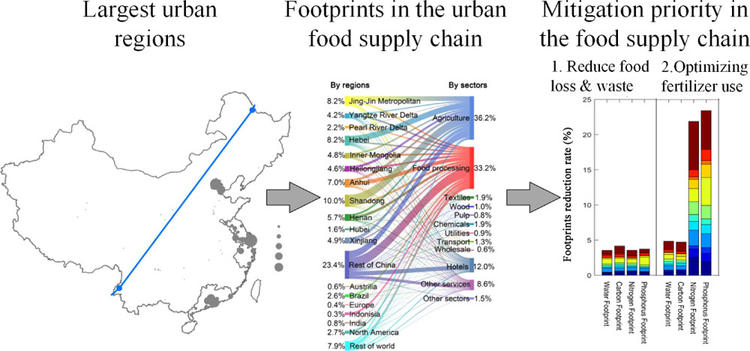
Transboundary environmental footprints of urban food supply chain and mitigation strategies
Type
Food supply has been the central issue of human development for millennia and has become increasingly critical in an urbanizing world. However, the environmental footprints and associated mitigation strategies of food consumption have rarely been comprehensively characterized at urban or regional scales. Here we analyze the water, carbon, reactive nitrogen and phosphorus footprints of food consumption in Chinese urban regions, and demonstrate how such information can help to formulate tailored mitigation strategies. The results show that in three of the largest urban regions of China, 44–93% of the four footprints are embodied in transboundary food supply. The size of the footprints and the effectiveness of mitigation measures in food supply chain vary across the environmental footprints and urban regions. However, targeting agriculture and food processing sectors in Hebei, Shandong and Henan Provinces can reduce these footprints by up to 47%. Our findings show that the analysis of the environmental footprints along the transboundary food supply chains could inform individualized and effective mitigation targets and strategies.

